We walked back down the hill and wandered a bit more until we came to the large maximum security animal quarantine station. but in spite of the prison-like feel, the animals were supposedly treated very well. A ranger tour was just starting, so we joined in. He apparently used to work here.
New Zealand already had a thriving industry of sheep and cattle that they had brought from Britain and Australia. But there was an interest to diversify into other livestock such s llamas, alpacas and deer. As to not accidentally introduce a disease that might destroy the country economically, the animals were first brought here. The first shipment of animals arrived in 1972. In the mid-80's, live animals were replaced with frozen embryos, without the risk of disease, so the station was closed in 1995.
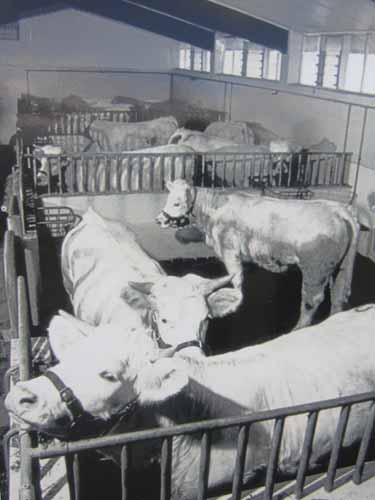
The building could house up to 120 cattle, 500 sheep and goats, 300 alpaca, or 200 deer. The animals were kept from 30 to 60 days.
As we toured the building, we couldn't help getting a bit creeped out from things like the showers, giant incinerators, and a tiny recreation yard.


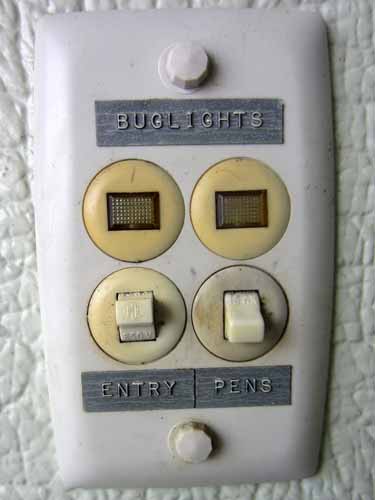
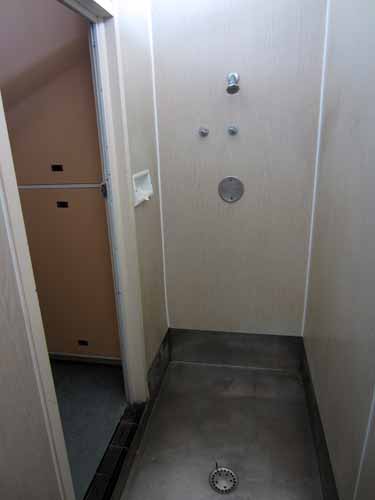
One had to pass through the showers to enter the building. The metal floor bent and creaked as we walked over it.
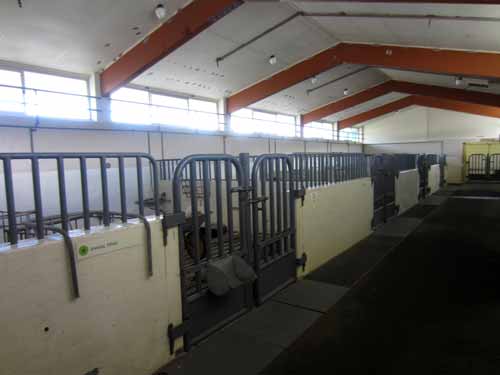
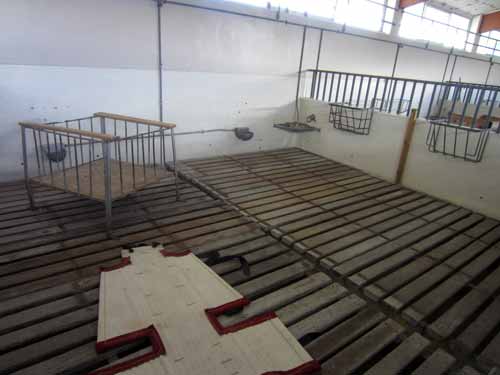

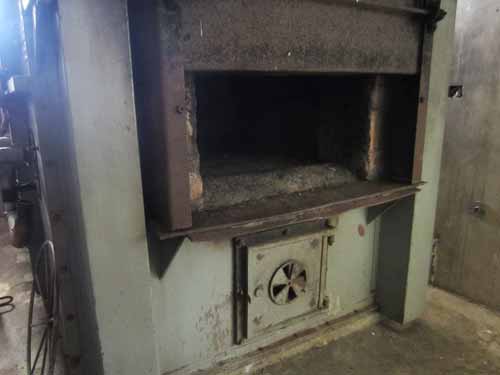
Allegedly for "combustible waste"
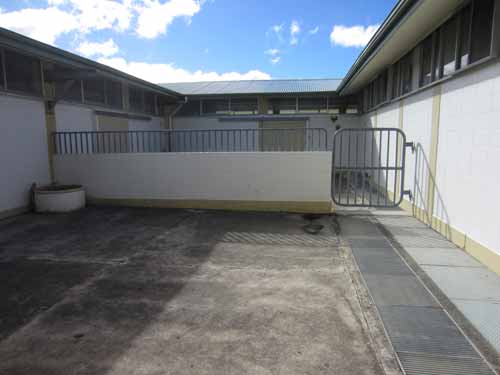
The outdoor exercize area


Uh.... what?
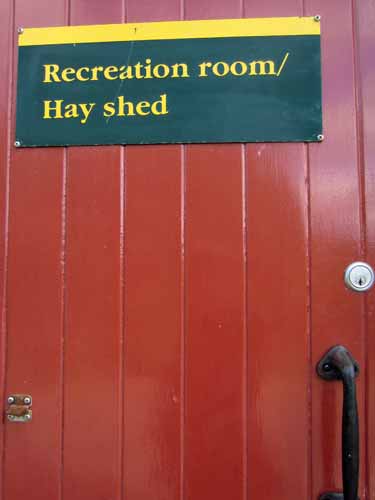
Is that what they mean by 'a romp in the hay'?
We left the confinement area, shook off the heebie-jeebies, and headed back up to the top of the hill for another scenic view.
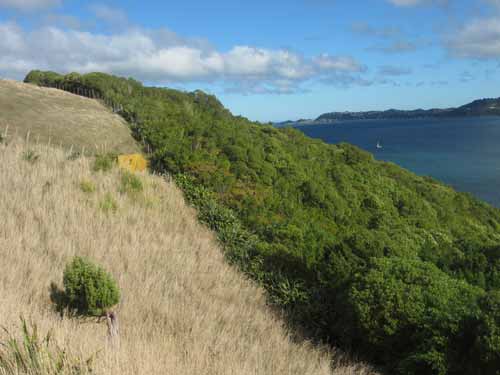
Man with his sheep (left) and nature
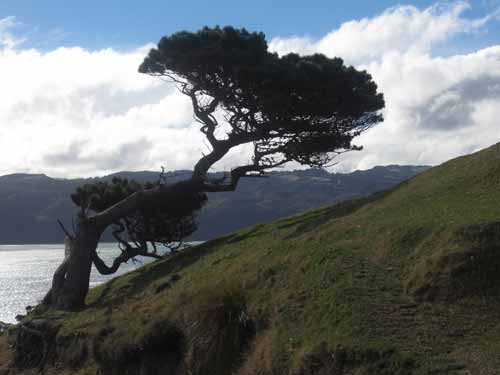
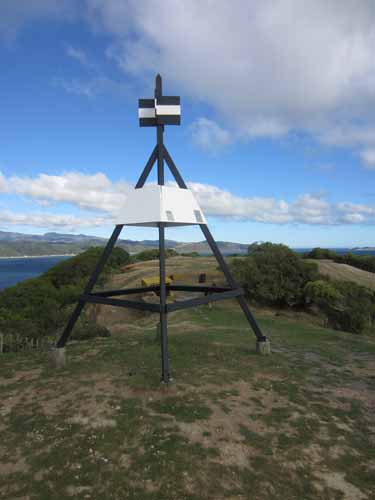
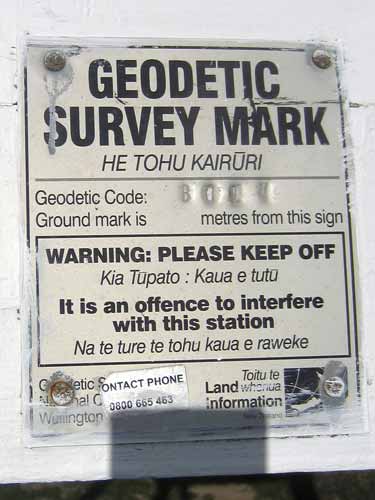

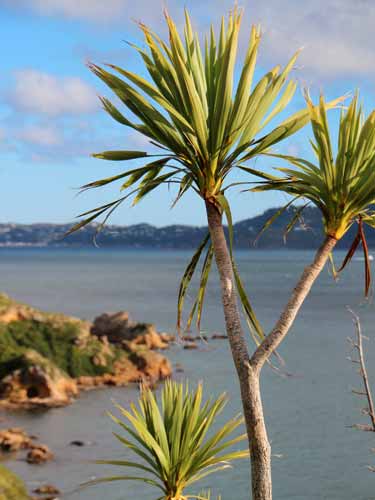
We still had some time before the ferry was due back, so we went into the ranger information center, where we got to learn all about the island's history and the critters on it. This island was once a peak on a ridge that formed 1.5 million years ago. As the land tilted downwards, the sea flooded the area and it became an island. By 1876, people had cut down all the large trees and stripped most of the vegetation.
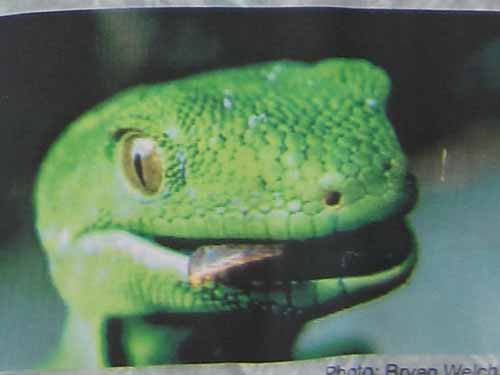
Look at me, I'm so funny, I'm a..... CLICK... Wait, did you just take that?! No, wait, I'm ready now, take another one... no, wait, come back, I was just kidding!
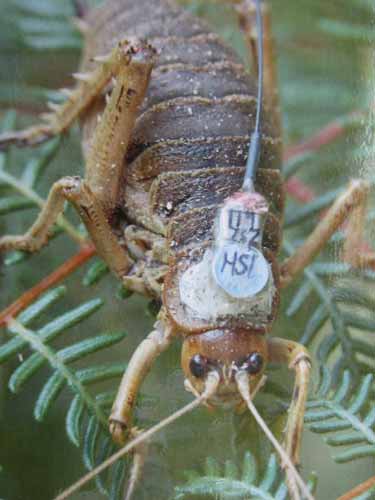
Oh dude, bummer!
No sooner do we step out side then we see a skink resting under the cottage. On our way down to the beach, we stopped and sat on a bench for a while in the forest, hoping to catch sight of one of the alleged many kakariki (or red-headed parakeets). No such luck though.
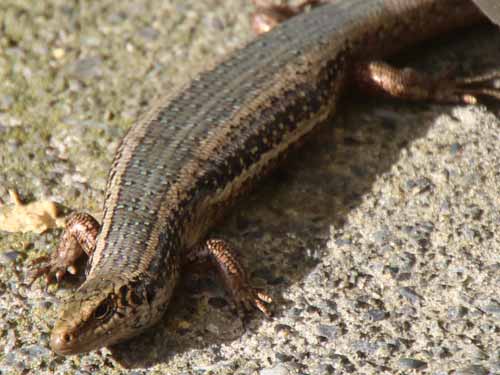
Our basking skink
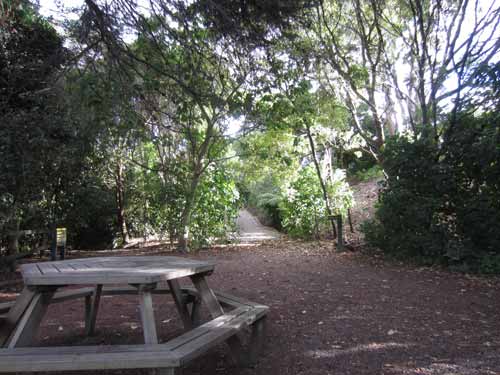
We reached the beach and walked along its shores. One couldn't go too far as most of the shoreline was reserved as a sanctuary for the birds.

A penguin house

Pieces of the old disinfecting and fumigation station
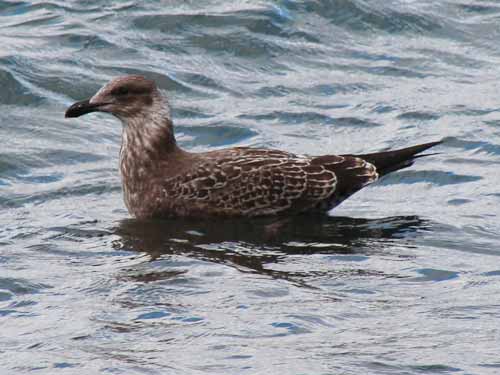
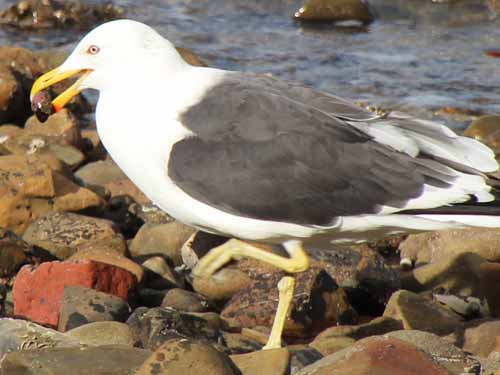
This gull had something in its mouth that it kept throwing violently on the ground and then picking up again. It is probably an oyster it's trying to crack open.
We arrived where the old Degaussing Station once stood. This was a station run by the WRENS (Women's Royal New Zealand Naval Service) who helped keep Allied ships safe from magnetic mines. During 1940, German raiders were using magnetic mines to destroy enemy ships. These mines were set off by the change that passing ships made to the Earth's magnetic field. Degaussing was the process of neutralizing a ship's magnetic signature so that it became "invisible" to the mines. A ship usually had to be degaussed every few months by passing a current-carrying cable up and down its hull. To test is a shipw was still safe, underwater detectors determined a ship's magnetic effect as it passed over it.
By turning the handle to give it power, we could listen to different stories told by Meg Pilcher, a former WWII WREN. We first listened to her talk about one night when she and another woman were all alone and kept hearing strange noises. Worried it might be an invasion, they crept fearfully outside only to discover it was nesting penguins. The second story didn't have such a happy ending. A ship had come in and all but the captain disembarked. Knowing they would be gone a while, he turned the ship's engines off. Unfortunately this also made it visible to the mines... and one promptly was pulled to the ship and BAM, blew the whole thing up, including the captain.
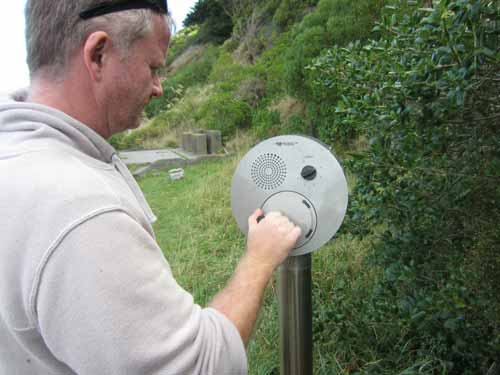
We waited back at the Rat House for the ferry to come get us. This time we sat on the top deck outside. Again it was a rocky ride. The weather had moved in and it sprinkled gently.
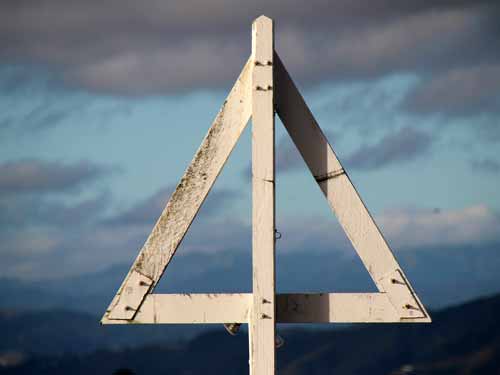
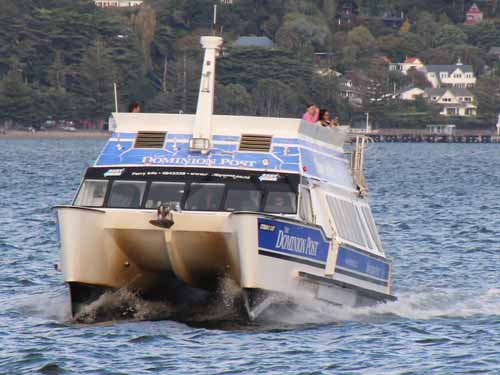
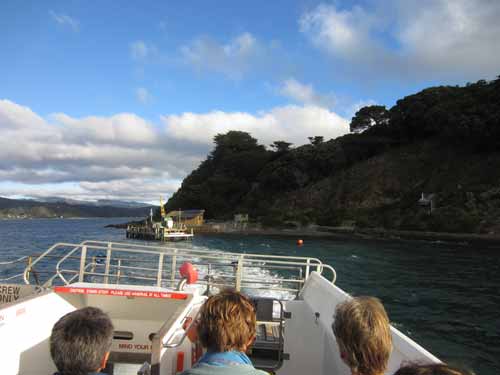
Leaving the island on the last boat of the day
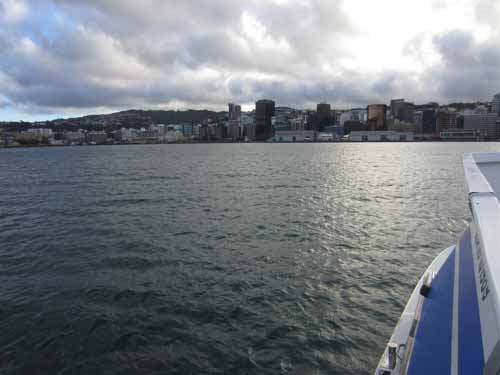
Approaching Wellington
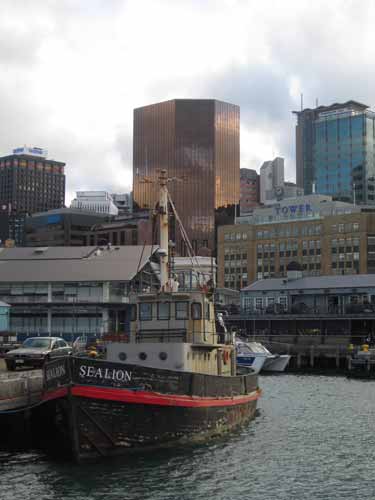
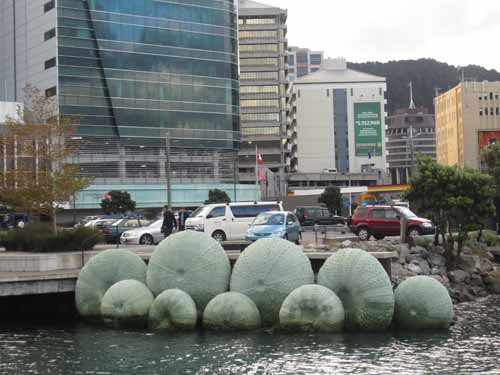
Interesting artwork
We were quite ravenous by the time we got off the ferry, so we grabbed something quick from the train station supermarket's pre-made section.
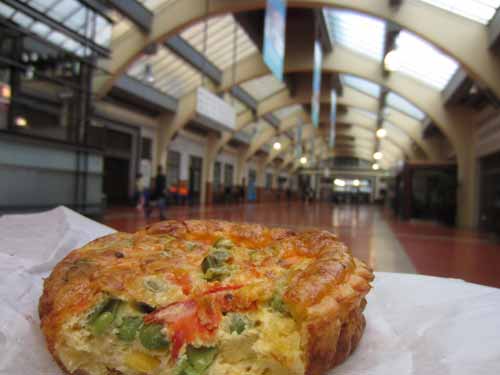
Mmmm... vegetable quiche
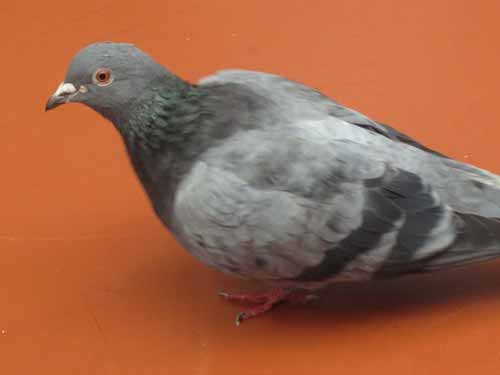
You're not going to eat that, are you?...
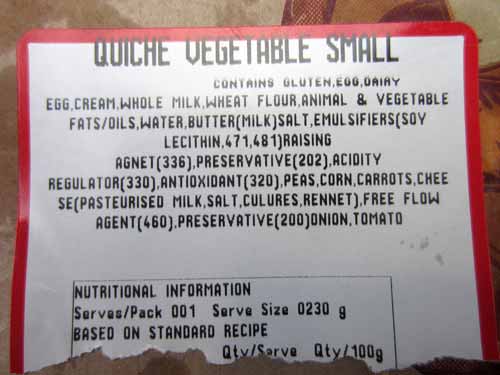
... Well, after reading the ingredients, maybe I shouldn't!
We got home and made a real dinner with some of the ingredients we had around the house.
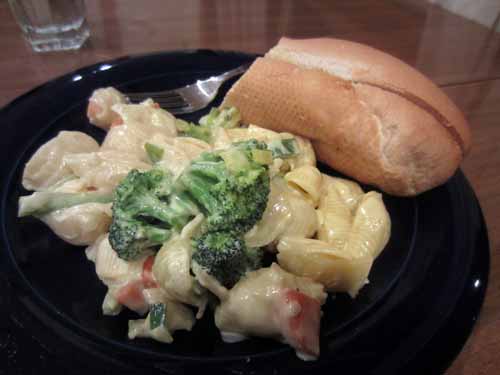
Pasta with veggies... and hopefully no Free Flow Agent (460)!

